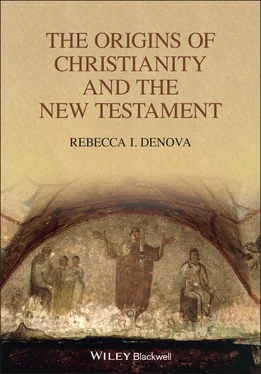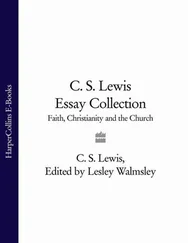Another element of rituals was specific to marking heightened stages in life: birth, puberty, marriage, death. The modern term for these occasions, which were all celebrated through religious rituals, is “ rites of passage” (some of which became the later Catholic “ sacraments”).
We typically apply the term “ cult” negatively to religious ideas that differ radically from the majority. In the ancient world, cultus (from the Latin colere , “care or cultivate”) was a broad term for everything that was involved in the care and maintenance of the gods. It did not indicate theology or spiritual differences. In this text, we use “native” or “ethnic cults” as a category. Then as now criticism of someone else’s “cult” occurred often. We encounter this specifically in New Testament criticisms of the cult of the Temple in Jerusalem.
Gentiles and Pagans (Problematic Terms)
Thousands of native cults and religious associations dotted the landscape. One word cannot represent them all. What we have in the Bible is the Jewish point of view that identified themselves over and against all others.
Translations of Bibles in English are somewhat tricky. In the Jewish Scriptures, all non-Jews are collectively identified as “the (other) nations,” from the Hebrew, goy or goyim (plural). Depending upon the context of the passage, this term is sometimes translated as “stranger” or “foreigner.”
In the New Testament, the word for “nations” is ethnos , referring to different “ethnic” communities. Through late Middle English (and through the King James Bible), the common translation became “Gentile” from the Latin gens , family or clan, for both goy and ethnos . “Gentile” simply means someone who is not Jewish.
However, a more popular term came into being when Christians began to dominate and rule the Roman Empire. In the late fourth century, “ pagan” became the term for anyone who was not Christian or Jewish. From the Latin paganus , it was a derogatory term for people in the hinterlands who had not converted to Christianity (equivalent to “hillbillies”). Many of the native cults focused on nature and fertility rituals. In the second century, the Church Fathers demonized these people, applying scathing reviews of their lifestyle and behavior that are still conjured up when we see the word “pagan.” This includes sexual orgies, drinking, and sometimes Satan worship. In this text, “native” or “ethnic” cult is the term of choice, although you will find “pagan” in many of the Suggested Readings.
The inheritance of Biblical texts in Western culture provided the raw material for criticism of the native cults, beginning with the books of the Prophets. These writers continually railed against the worship of other gods as idolatry(the worship of icons, or images). Christians utilized these texts in their literature, which contributed to the overall view that such practices created anxiety: too many gods, too many myths, too many empty rituals, and an absence of spirituality for individual salvation. It is important to note that there is no historical evidence for such “anxiety” in the ancient world. Nevertheless, there are dozens of new books that continue to explain the rise and “triumph” of Christianity in the Roman Empire based upon this theory.
Conversion means moving from one religious system to another. This word often appears in histories of ancient Judaism and early Christianity. People who participated in ethnic cults had the freedom to belong to several religious associations. They did not “convert” to another group by doing so. Ancient religion was in the blood; you were born into it as part of your clan or tribe. “Conversion” in the ancient world meant a change in lifestyle (one’s daily “customs”). Greeks and Romans who wanted to become a Jew fully “converted” in this sense.
The most famous “convert” in history is the Apostle Paul, and his “conversion on the road to Damascus.” However, this is a misnomer; at the time there was no Christian religious system to convert to. Paul himself described it as a “call” in the manner of the Prophets of Israel who were called by God for a specific mission.
Old Testament/Jewish Scriptures
Canon
You will often see the texts of the Bible referred to as the “ canon” of Jewish texts and the gospels as the “ canonical gospels.” In Greek, “canon” was a system of measurement. Applied in this sense “canon” refers to those books that were “measured” in later decisions taken to determine which books would be listed as “Sacred Scriptures.” The Jewish books (the first half of the Bible) were canonized c. 200 ce under the auspices of a Rabbi known as Judah the Prince. The documents that became the New Testament, the gospels, and the letters of Paul took several centuries to reach agreement on the “canon,” and only began to be considered in a formal list under Constantine (c. 325 ce).
The designation “Old Testament” is a familiar one for the Jewish books. However, it is a Christian invention that is derogatory in nature. “Testament” is a later word for the older term of “ covenant.” “Covenant” simply meant a “contract” between you and your people and your god(s). Christians in the second century began claiming that the older “covenant” with Israel was no longer valid and was replaced by the “new covenant” through Jesus. This idea is known today as “supersessionism” (“superseded” by Christianity, and still resonates as an element of modern anti-Semitism).
Naming the older books the “Old Testament” implies a judgment call. For Jews, these texts are not “old” in the sense that they are no longer valid. They remain at the center of Jewish belief and life. This textbook will use the term, “ Jewish Scriptures” or “the Scriptures,” when referring to the various books of this collection. Some texts refer to the New Testament as the “Christian Scriptures,” but “New Testament” is the earlier descriptor. In the first century when Christian texts referred to “the Scriptures,” it was the Jewish Scriptures that they had in mind.
Mark, Matthew, Luke, and John are consistently designated the “ canonical gospels.” This is out of place, as there was no concept of “canon” for these gospels in the first century. Between the first and third centuries there were dozens of other gospels that narrated different details and different interpretations of the teachings of Jesus. In the second century, the Church Fathers began a process of declaring which of these gospels contained “correct belief” ( orthodoxy) and which were “ heretical” (from the Greek haíresis , “a school of thought”). The term “canonical gospels” is relative to the later decision that included only these four gospels in the New Testament.
From the Greek, “seen together” Mark, Matthew, and Luke are referred to as the “ Synoptic Gospels.” If you laid them out side by side, these three have the same narrative structure: a ministry in the Galilee followed by one trip to Jerusalem. They also share similar teachings, parables, exorcisms, and miracle stories. By contrast, John is not only different structurally (at least three trips to Jerusalem during the ministry), but John’s Jesus is totally different from the other three (no parables, no exorcisms, “signs” stories instead of miracles).
Читать дальше












